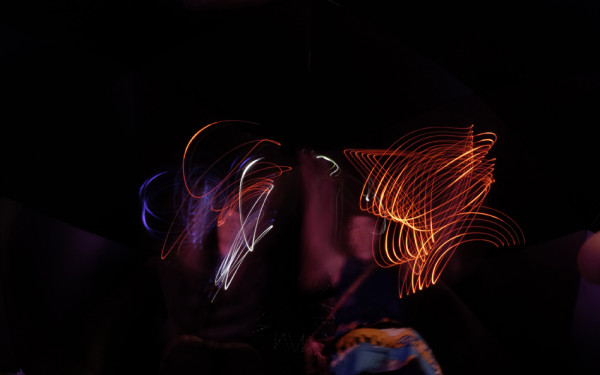Mordecai Richler and the Decaying Gazebo on Mount Royal
Four years and half a million dollars later, the Mordecai Richler Pavilion on the foot of Mount Royal still hasn’t seen the light of day.
Every world coincides on the mountain: joggers, cross country skiers, ravers, drummers, sword fighters, ice-skaters, mountain bikers—all year round, you can do just about anything on Mount Royal.
Walking on the mountain, green grass stretching ahead of you, the skyline poking out, the smell of drugs, the sound of tam tams echoing in the background—and a gazebo is left dilapidating in its place.
Mount Royal always served as a place for leisure and recreation. The gazebo overlooking Park Ave. was built in 1928 in order to accommodate communal concerts that were often held on the mountain.
In the 2000s, the gazebo was left to decay. In keeping with its spirits, “Gazebo Mont-Royal,” an electronic rave scene, had taken over, giving some life back into it every Sunday night. However, the city shut down this initiative in June this summer. Camuz Musique Montreal announced on its website that the city claimed the event attracted too many people, was a fire hazard and created noise pollution and litter.
In 2011, the Ville-Marie borough announced it would renovate the gazebo standing on the southwest corner of the mountain.
The renovations were fired off by the initiative to name the gazebo after Montreal-born author Mordecai Richler, best known for his novel The Apprenticeship of Duddy Kravitz.
Richler’s narratives and journalism commentary raised questions relating to the city, the Jewish community and identity, and the French-English language dichotomy in Montreal. The author was and still remains a controversial and marginalized figure for his writings against Quebec nationalism and anti-Semitism.
“Richler willingly presented himself as a possible target. A lot of that came from the satire and the use of sometimes sharp-edged humour he employed in his writing,” said Professor Norman Ravvin of Concordia University.
Ravvin has a doctorate in English literature and was involved in an academic publication titled Mordecai Richler Then and Now.
Nevertheless, 10 years after his death, the city chose to honour one of Montreal’s most successful authors with a decaying gazebo on the mountain, a lieu that had no relations with the author himself.
According to Ravvin, the slope of the mountain where the gazebo is located is not connected to the author, who lived in and romanticized about the Mile-End neighbourhood—and more precisely St. Urbain St.
“The city kept it going as a bizarre idea, that’s the embarrassing part,” Ravvin said.
“The city kept it going as a bizarre idea, that’s the embarrassing part,” Professor Norman Ravvin said.
Montreal would have been better off renaming a street in the Mile-End after Richler, according to the professor. However, there had been speculations that a former councillor of the Plateau Mont-Royal borough refused to honour the author, because of Richler’s political stance on Quebec nationalism, Ravvin continued.
Years into the conflict, in the midst of the controversy, a library in the Mile-End was finally named after Richler in March this year—a move much more fitting to his persona.
The various Jewish organizations in Montreal contacted by The Link did not want to make a statement about the subject, saying the issue had nothing to do with the community.
Montreal has been working hard to preserve the mountain as the urban oasis it is today.
In 2014, the city spent $16 million in their fund for large parks and green spaces. This year, the city budgeted $6 million more than last year, raising the fund for parks to $22 million.
The cost of the renovations to the gazebo was originally estimated at $379,000, with the repairs lasting from May to mid-September. Later on, Mayor Coderre raised the budget to $535,000 due to unforeseen issues with lead paint on the structure.
In 1928, when the gazebo was first built, a budget of $4,800 was allotted to build seven music pavilions around the city.
Jeanne-Mance Councillor Alex Norris, part of the city hall opposition party, agrees that Mordecai Richler was a controversial person, but said that’s not why the project has been dragging on for so long.
“It’s a problem of mismanagement with a dose of incompetence,” he said.
According to Norris, the city should have foreseen the possible problems revolving around restoring a heritage structure like the gazebo. Lead paint is common in old structures, and it shouldn’t have been a last-minute surprise, adding to the costs of the renovation and stalling the project, he said.
This summer, Mayor Coderre promised that if the project wasn’t finished by the end of the season, he’d build it himself, Norris recalls.
Well into the month of October, and four years after the initial deadline, the gazebo is still fenced off and covered by a tarp and the mystery around the gazebo and Richler’s Montreal legacy lives on.

_900_600_90.jpg)
_600_832_s.png)

3_600_375_90_s_c1.jpg)

2_600_375_90_s_c1.jpg)
_600_375_90_s_c1.jpg)